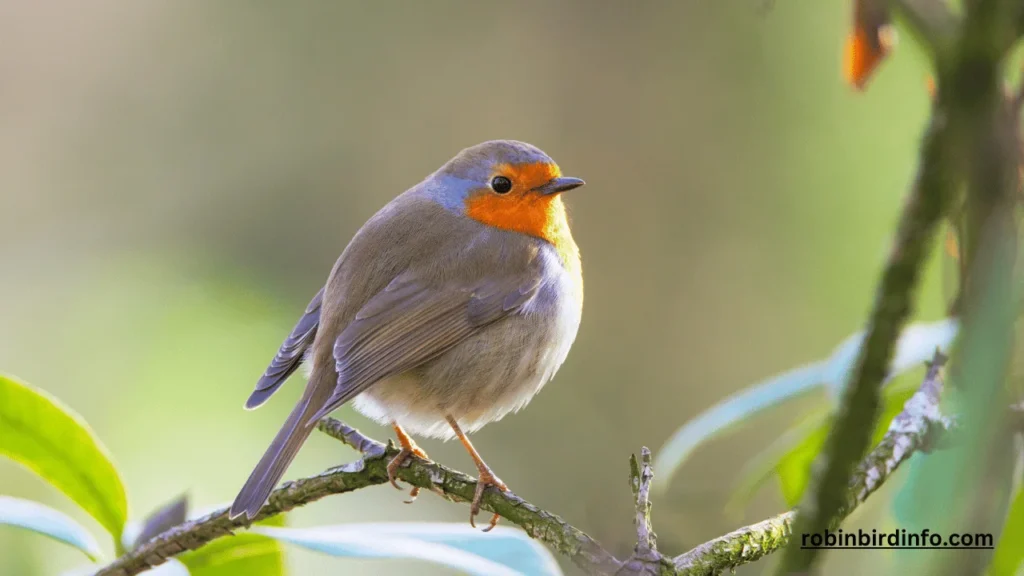Ever watch a seemingly harmless robin puff out its chest, wings akimbo, taking a dive at its own reflection in a window?
It might surprise you, but these cheerful songbirds with their bright red breasts can pack a punch when it comes to territorial disputes. While often seen as friendly backyard visitors, American Robins are surprisingly fierce defenders of their space, engaging in dramatic displays and even physical altercations to keep rivals at bay.
This aggressive behavior might seem out of character for a bird known for its melodic warbling and fondness for earthworms.
But understanding how big American Robins are, and the demands of their life cycle, sheds light on why they become so territorial. Knowing their size and needs helps us appreciate the challenges they face and the lengths they’ll go to in order to survive and thrive.
This blog post delves into the fascinating world of robin territoriality, exploring the factors that trigger their fiery displays and the reasons behind their seemingly outsized aggression. So, buckle up and get ready to see the American Robin in a whole new light!
Contents
Physical Dimensions of American Robins
Length: The average length of an American Robin is about 9-11 inches (23-28 cm), including its tail.
Wingspan: American Robins have a wingspan of approximately 12-16 inches (30-41 cm). This wingspan allows them to maneuver through trees and bushes with ease.
Weight: The average weight of an American Robin ranges from 2.5 to 3.5 ounces (70-100 grams). Weight can vary depending on factors such as sex, age, and time of year.
Factors Influencing Robin Size
Geographic Variation: There can be slight variations in the size of American Robins across their geographic range. Birds in northern regions may be slightly larger than those in southern regions.
Sex Differences: Male American Robins are generally larger than female Robins. This size difference is particularly noticeable in terms of wingspan and weight.
Seasonal Variation: The size of American Robins can also vary throughout the year. Birds may gain weight before migration to fuel their journey, and they may lose weight during migration and breeding seasons.
Comparison with Other Bird Species
Size Comparison: American Robins are medium-sized songbirds. They are larger than small birds like sparrows but smaller than larger birds like crows or hawks.
Ecological Niche: The size of American Robins is well-suited to their ecological niche. Their size allows them to forage for a variety of food sources, including insects, berries, and fruits.
The Role of Size in Robin Behavior
Territorial Behavior: Size can influence Robin territorial behavior. Larger, more dominant individuals may be able to defend larger territories and attract more mates.
Mating Behavior: Larger, healthier Robins may be more attractive to potential mates. Female Robins may prefer larger males as mates, as they may be better able to provide for their offspring.
Predator Avoidance: While size can provide some protection from predators, Robins also rely on camouflage and agility to avoid being caught.
Conservation Implications

Habitat Loss and Fragmentation: Habitat loss and fragmentation can impact Robin populations by reducing the availability of suitable nesting and foraging sites.
Climate Change: Climate change can affect Robin populations by altering the distribution of food resources and changing the timing of breeding seasons.
Conservation Strategies: To protect Robin populations, it is important to conserve their habitats, reduce pesticide use, and promote bird-friendly landscaping. By creating a healthy environment, we can help ensure the survival of these beloved birds.
Conclusion
American Robins are medium-sized songbirds with a distinctive appearance.
Their size and weight are influenced by a variety of factors, including genetics, environment, and individual variation. By understanding the factors that influence Robin size, we can appreciate the adaptations that have allowed them to thrive in diverse habitats.
Protecting their habitats and reducing human-caused threats is essential for the long-term survival of these beloved birds.
FAQ’s
How big is a typical American Robin?
American Robins are typically 9-11 inches long, with a wingspan of 12-16 inches.
How much does a Robin weigh?
The average weight of an American Robin is between 2.5 and 3.5 ounces.
Do male and female Robins differ in size?
Yes, male American Robins are generally larger than female Robins.
How does the size of a Robin affect its behavior?
Larger Robins may have an advantage in territorial disputes and mate selection. However, size can also make them more conspicuous to predators.
How does the size of a Robin affect its diet?
The size of a Robin’s beak and body shape influence its foraging behavior. Robins can eat a variety of foods, including insects, berries, and fruits.
How does climate change affect Robin size?
Climate change can impact Robin size by altering food availability and habitat conditions. Warmer temperatures may lead to changes in insect populations, which can affect Robin growth and development.








